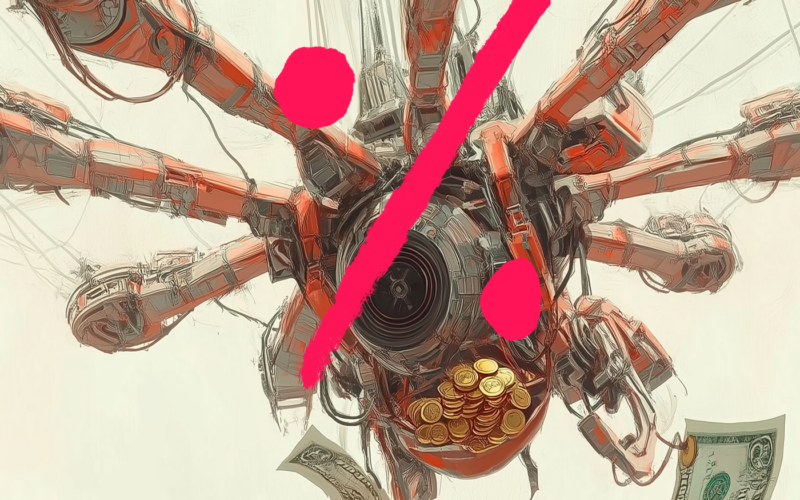This week, the exciting world of content creation took a delightfully dystopian turn as both the United States and North Korea unveiled their latest innovation in prison reform: forcing inmates to become TikTok stars and YouTube personalities. Because nothing says “rehabilitation” quite like making a murderer explain makeup tutorials while a guard holds a cattle prod just out of frame.
Yes, that’s right. In a heartwarming display of cross-ideological harmony, these geopolitical enemies have independently arrived at the same conclusion – that prisoners represent an untapped goldmine of content creation potential. Think Orange is the New Black, but instead of Netflix watching them, they’re desperately trying to get you to smash that like button.
America’s “Second Chance Studios”
The American version, euphemistically branded as “Second Chance Studios,” has been rolling out across federal penitentiaries faster than you can say “13th Amendment loophole.” Prisoners are now hunched over ring lights instead of number plates, desperately trying to hit their engagement metrics while a former PE teacher turned content supervisor shouts inspirational phrases like “Your parole depends on those click-through rates, Johnson!”
The programme boasts an impressive set of KPIs (Key Prison Indicators) that inmates must meet, including:
- Minimum 15 videos per week (25 if you’re in for a violent offence)
- 500,000 monthly views (double for white-collar criminals because “they understand business”)
- Engagement rate of 4.3% (calculated to three decimal places for maximum anxiety)
- Merch sales targets that increase weekly regardless of performance
- “Positivity score” measured by an AI that was trained exclusively on Mormon mummy blogs
- Zero mentions of “prison conditions,” “human rights,” or “this is basically slavery”
Failure to meet these targets results in what the Department of Corrections calls “content optimisation strategies,” which strangely look exactly like solitary confinement but with motivational posters of Gary Vee sellotaped to the wall.
North Korea’s “Joyful Creation Camps”
Not to be outdone, North Korea’s “Joyful Creation Camps” have taken a slightly different approach. Political prisoners who once spent their days mining uranium or manufacturing military uniforms now find themselves in brightly painted studios with guns pointed at their family photos, creating cheerful videos about how wonderful life is in the Democratic People’s Republic.
Their KPIs are, if anything, even more soul-crushing:
- 100% positive comments about Supreme Leader (criticism results in immediate “cast reduction”)
- Daily videos demonstrating North Korean technological superiority (using Windows 95)
- Weekly “America is Crumbling” compilation with minimum 20 clips
- Zero trembling hands visible on camera (three strikes and you’re literally out)
- Mandatory crying with joy when mentioning government policies
- Content must generate enough revenue to fund at least 3% of a missile test
What’s particularly innovative about the North Korean approach is their “one strike and your entire bloodline is out” policy, which has led to unprecedented levels of worker productivity and a strange new genre of content where terrified people pretend they’re having the time of their lives.
The Inevitable Corporate Sponsorships
Of course, no tragedy would be complete without some tone-deaf corporate involvement. Several major brands have already jumped at the opportunity to sponsor these prison content studios, with slogans like:
- Nike: “Just Do It (Or Else)”
- Apple: “Think Different (But Not Too Different)”
- Spotify: “Prison Playlists – Songs to Serve Time To”
- Red Bull: “Red Bull Gives You Wings (Terms and Conditions Apply: No Actual Escape Attempts)”
One particularly enthusiastic marketing executive was quoted as saying, “This is perfect for our brand! These creators are literally captive audiences. Plus, the authenticity of their desperation really resonates with our Gen Z target demographic.”
The Bleak Reality
The most disturbing part of this whole arrangement is how unsurprising it feels. We’ve already commodified every aspect of human existence – why not incarceration? In a world where attention is currency, we’ve found a way to mine it from those who have nothing else to give.
Critics have called the practice “deeply unethical,” “potentially violating several international laws,” and “exactly what we’d expect from late-stage capitalism,” before returning to their TikTok feeds to watch videos that, for all they know, could be coming from these very prisons.
When questioned about the ethics of the programme, one correctional official shrugged and said, “Hey, at least they’re learning marketable skills. Do you know how much an influencer with 500,000 followers can make on the outside? Of course, we take 95% of that revenue, but still… character building!”
The North Korean response was more succinct: “Our content creators are happier than American content creators. Look at their smiles. Look at them. LOOK AT THEM.”
The Future of Incarceration
Industry analysts predict that by 2028, prison content farms will produce roughly 70% of all social media content, with viewers none the wiser. The quality differences are negligible, especially considering most TikTok and YouTube content already looks like it was made under duress.
So the next time you’re mindlessly scrolling through yet another “10 Life Hacks You Never Knew You Needed” video, take a moment to look closely at the influencer’s eyes. That thousand-yard stare might not be from the existential emptiness of internet fame – it might be because there’s a guard just off camera holding their parole papers and a dislike button.
Welcome to the future of entertainment. It’s exactly as dystopian as we deserve.
Hmm. Well, that’s all we’ve got time for. Till next time, go away.






